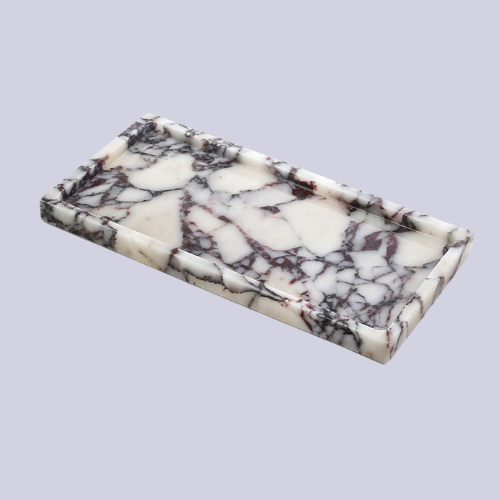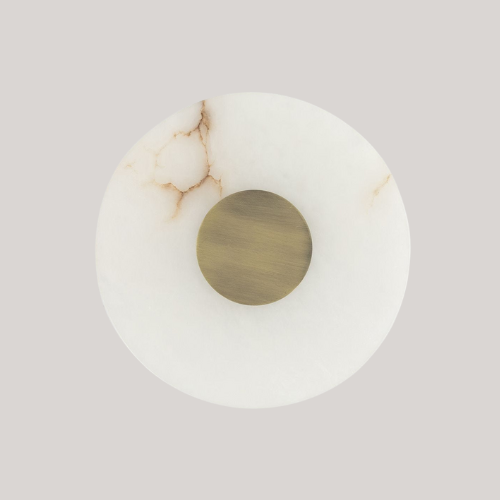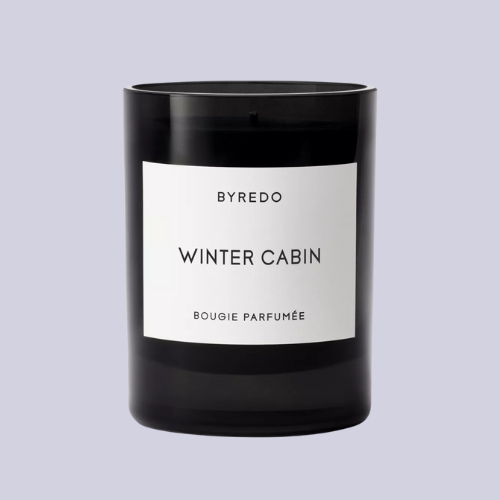7 Material Options for Your Bathroom Countertops — And How Interior Designers Use Them for Spectacular Vanities, Every Time
We asked the experts for their favorite bathroom countertops, and here are their top picks you're going to want in your 2026 reno ideas
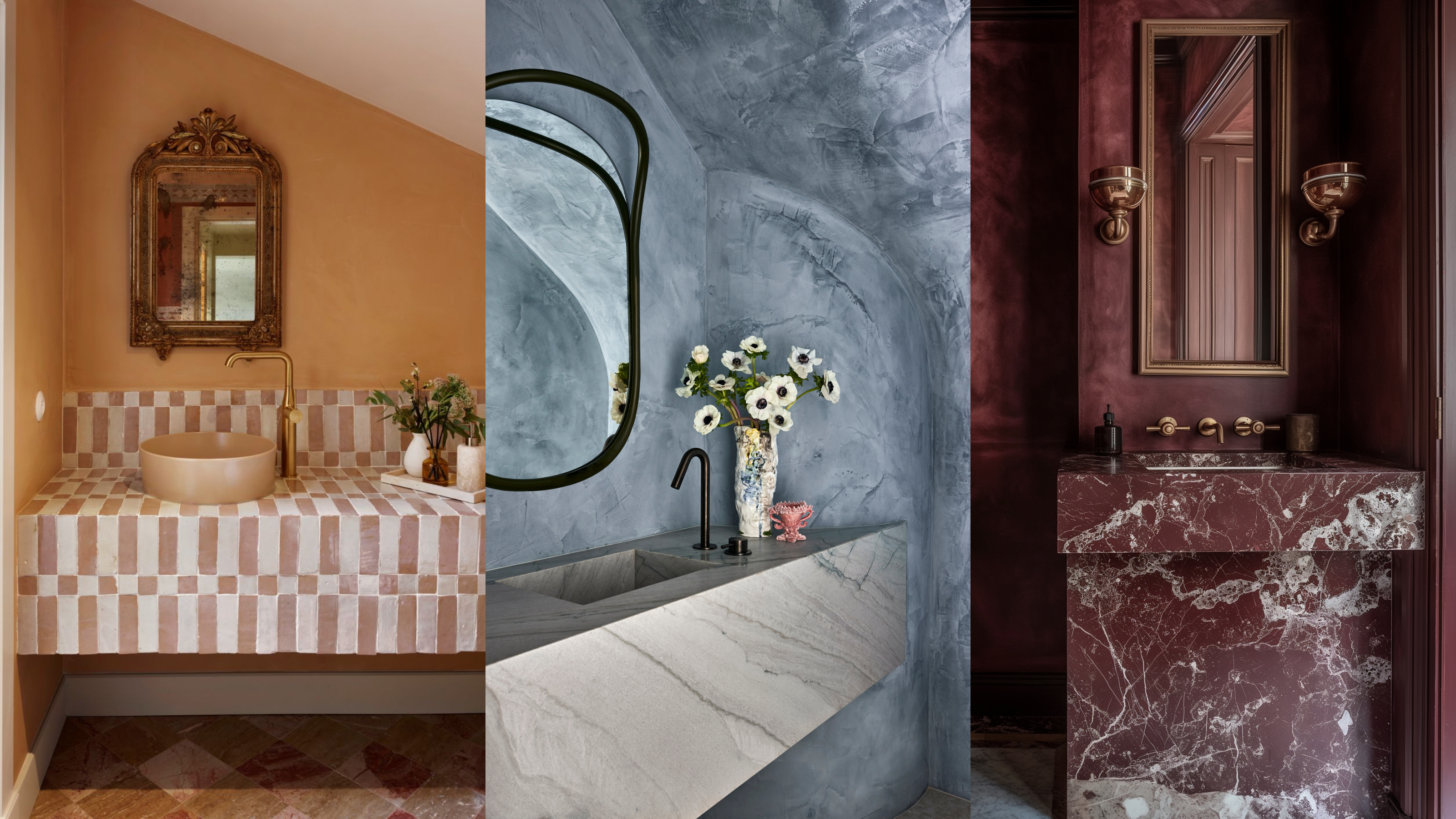

The right bathroom countertop can be the finishing touch that elevates your space from one of pure function to undeniable beauty.
In jewel-box powder rooms and sprawling modern bathrooms alike, the materials you use can dictate the overall atmosphere of the space. A dramatic, richly veined marble immediately marks the room as a place of unabashed luxury and opulence, while a cool, dark soapstone can create a moodier, laid-back feel.
And while looks are important, these materials can't fulfil a purely aesthetic role. They have to be designed to withstand their surroundings, durable, and robust enough to handle the tolls of daily use.
So, as you can tell, choosing the best bathroom countertop material is no easy feat. But our experts have somehow perfected it. Read on for all their top picks.
1. Marble
Rosso Levanto

Rosso levanto is known for its signature dark red color.
Starting with a bang, if you're a fan of deep, dramatic interiors, Rosso Levanto is the type of marble for you. Interior designer Ryan Saghian pairs the material with a similarly toned plaster paint finish, making for a rich, cocooning look.
"I’m forever drawn to natural stone — it has soul," he explains. "No two slabs are the same, and that individuality adds depth to a bathroom. It’s timeless, and it ages beautifully, which I love."
To complete the look, Ryan recommends accessorizing in a way that elevates the space, while keeping the attention on the stone. He says, "When styling, I keep it uncluttered but elevated — a marble or brass tray with daily essentials, a sculptural object, and something living like a single branch or stem in a small vase. The key is restraint — everything should feel curated but never staged."
The Livingetc newsletters are your inside source for what’s shaping interiors now - and what’s next. Discover trend forecasts, smart style ideas, and curated shopping inspiration that brings design to life. Subscribe today and stay ahead of the curve.
Established in 2011, Ryan Saghian Interior Design Studio is an internationally acclaimed, award-winning full-service design firm built on the belief that great design should be unapologetically personal. Based in Los Angeles, the firm brings together a dynamic team of senior designers, junior designers, and project managers — all united by a shared commitment to craftsmanship, storytelling, and precision.
Ottoman Marble
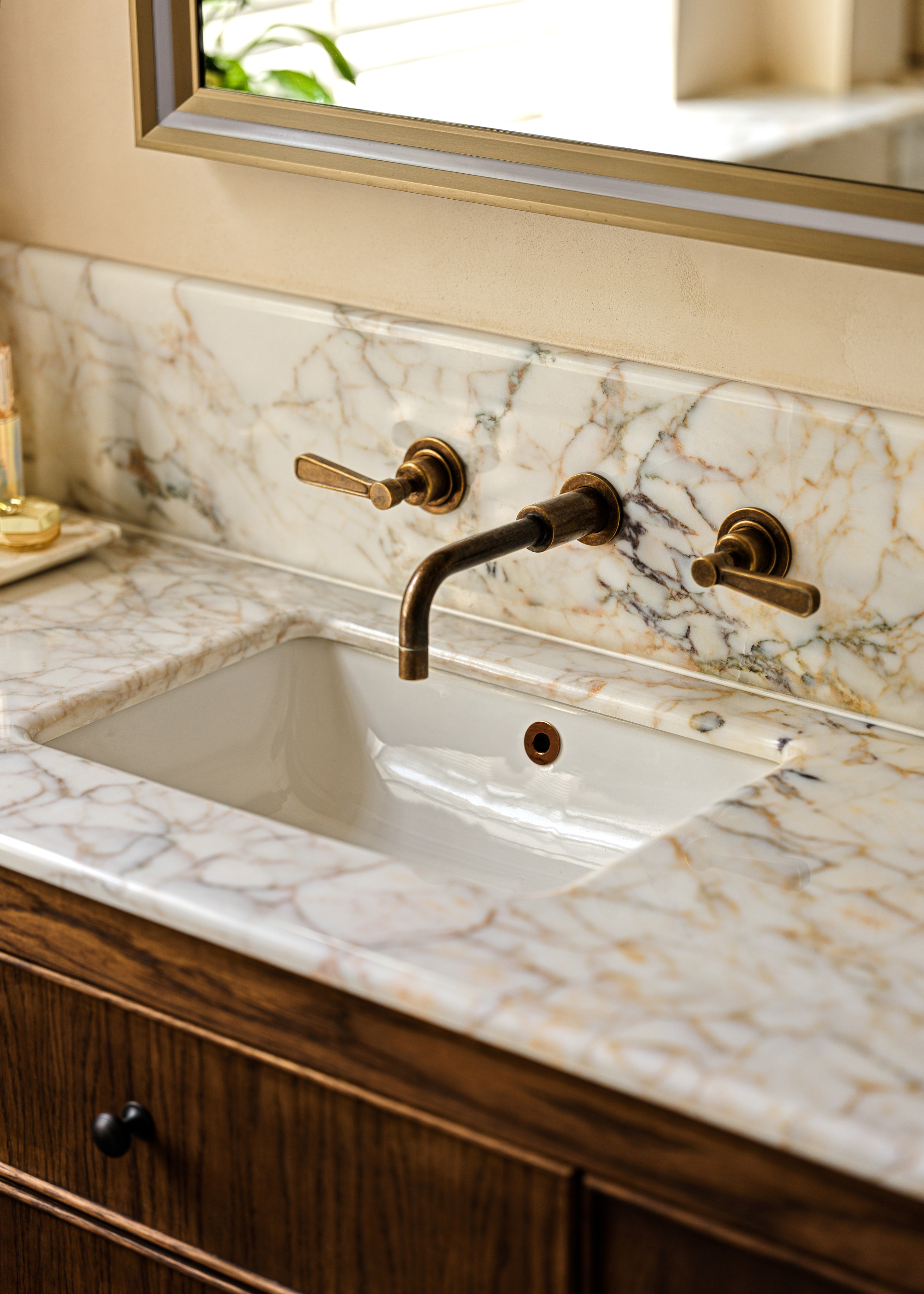
Ottoman marble looks especially gorgeous paired with antiqued brassware.
Or, for a more subtle, toned-down finish, search for softer, creamier-toned stones instead.
Grazzie Wilson, from Ca’ Pietra, says, "Ottoman Marble is a beautiful choice for a vanity countertop, especially in a bathroom where natural stone can take center stage."
She continues, explaining, "Its soft veining and warm undertones bring a timeless, elegant quality that pairs effortlessly with both classic and contemporary cabinetry. Beyond aesthetics, marble feels inherently luxurious underhand — cool, tactile and quietly opulent — making it ideal for daily rituals."
The variation in tones across the veining invites a real ease in pairing this stone with other materials. It would look gorgeous in a brick floor bathroom, or paired with a deep, warm wood.
"When it comes to styling, let the stone speak for itself," Grazzie suggests. "Keep surfaces curated with tonal accessories in brushed brass or aged bronze to echo the marble’s natural warmth, and add organic elements such as a small potted plant or linen hand towel for softness. Pairing Ottoman Marble with a neutral plastered wall or textural tile enhances its depth of tone and allows the natural variation in the stone to shine."
Arabescato Marble
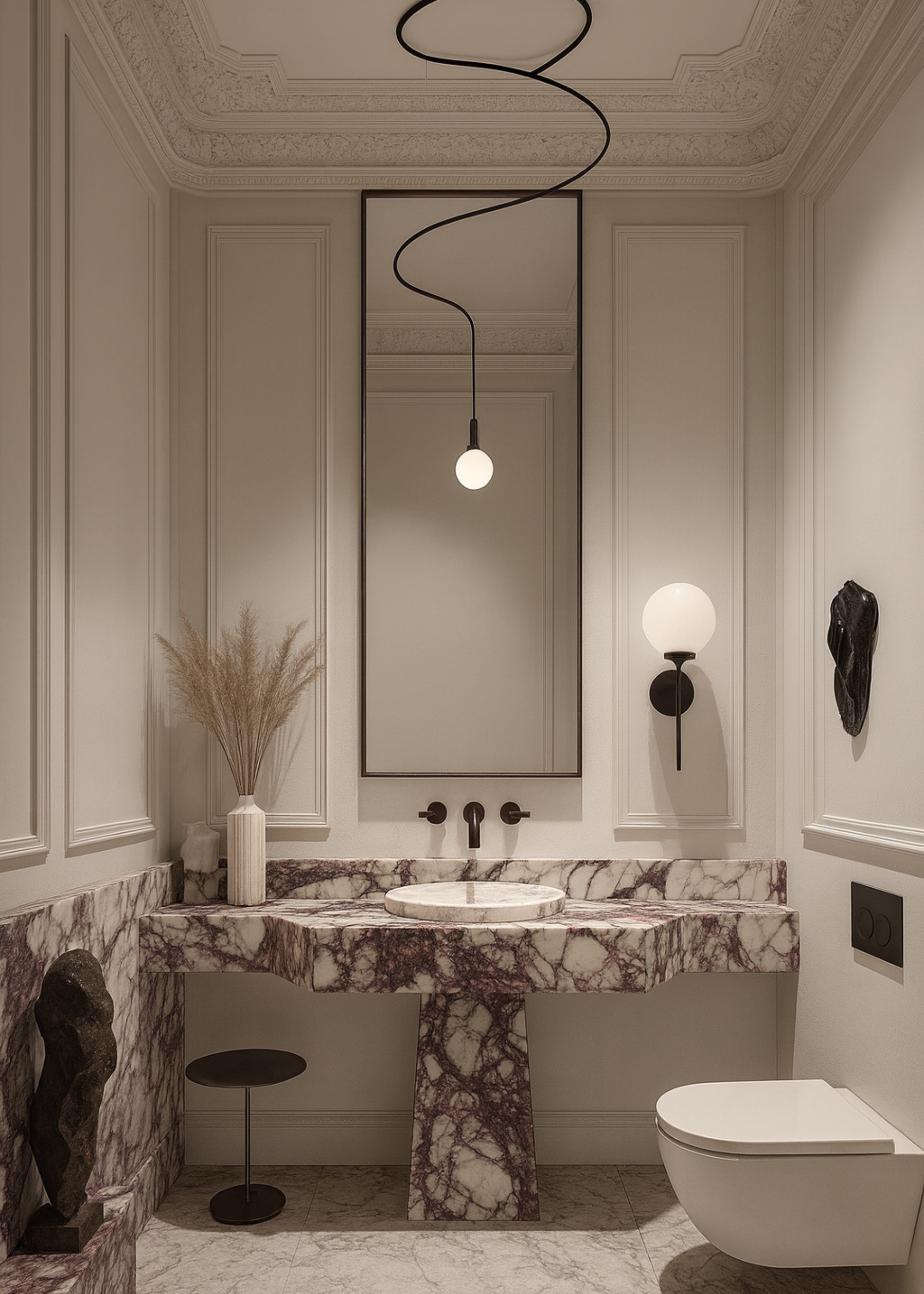
Let the veining of the marble take center stage by pairing it with neutral tones and minimal accessories.
Another dramatic yet refined option, Yeg Infill's Sheri Hammoud describes Arabescato marble as a 'timeless favorite', and it's easy to see why.
"They’re durable enough for everyday use, but their veining has a sculptural quality that instantly elevates even the simplest bathroom," says Sheri, "Natural stone brings depth, character, and a sense of quiet luxury that engineered surfaces often can’t replicate."
The rich color and striking veining make for a showstopper vanity, perfect for luxurious spa bathrooms.
Sheri Hammoud is the founder and principal designer of Yeg Infill Design, a luxury studio recognized worldwide for its timeless, editorial interiors. With projects spanning Canada, the US, Europe, and the Middle East, Sheri is known for blending modern architecture with sculptural details, natural stone, and quiet layers of luxury.
Calacatta Viola
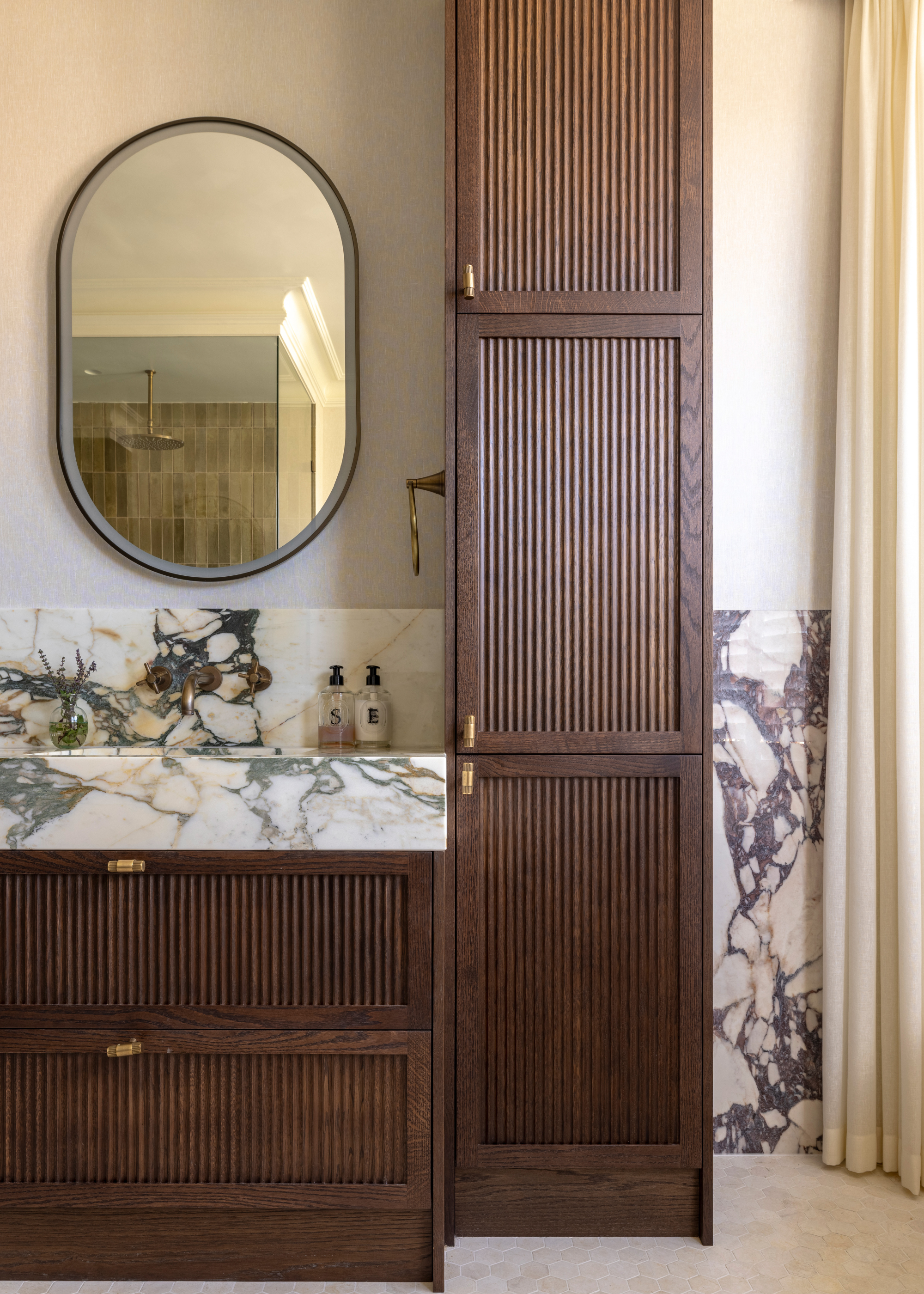
The dark, warm wooden cabinets mirror the tones in the veining of the marble.
One of the most iconic types of marble, Calacatta Viola gained popularity for its rich, purple veining and creamy white surface.
In this bathroom, it provides a a striking anchor for the space, pairing beautifully with the dark wooden cabinetry.
"Chosen for its dramatic veining and natural variation, Calacatta Viola invites a sense of luxury and individuality to the vanity’s surface," comments Matthew Andrews, from Cor Domi.
"The marble’s organic patterning and warm undertones create a beautifully tactile contrast to the surrounding materials, resulting in a bathroom that feels both timeless and artful."
2. Soapstone
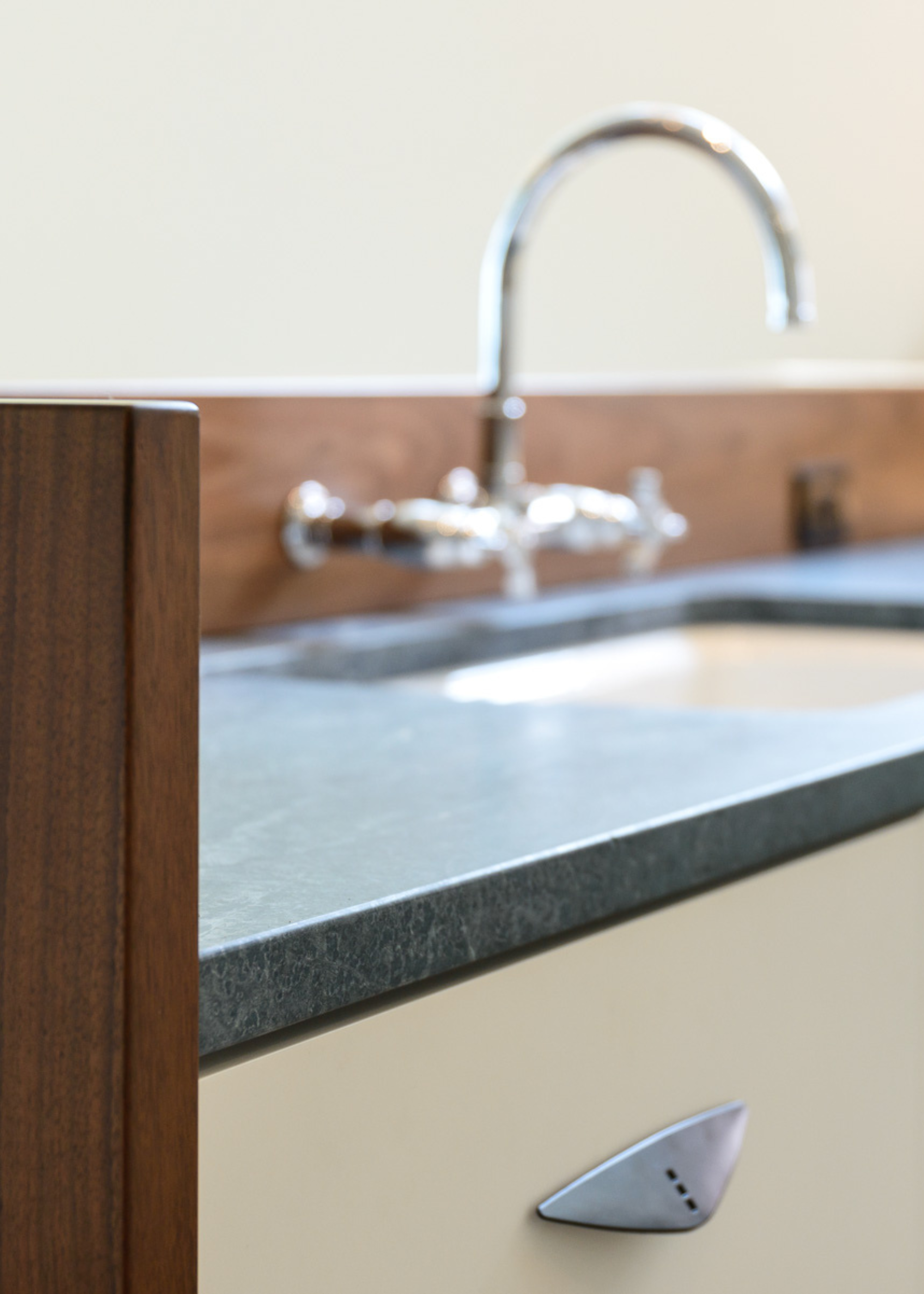
Soapstone is also a great choice for kitchen counters due to their heat-resistant qualities.
While quartz can offer a very convincing recreation of natural stone, engineered materials aren't for everyone, and sometimes you just want the real deal.
But this doesn't limit you solely to marble. As The Brownstone Boys note, "We love using natural stone, especially marble or soapstone, for bathroom countertops. Both materials have a timeless quality and develop a beautiful patina over time, which feels right at home in older properties."
Soapstone is a unique material, a metamorphic rock that's known for its soft, soap-like texture and impressive heat-resistant qualities. It has a dark, intense finish and develops a natural patina over time, which is particularly appealing to those who enjoy watching materials change and take on new forms over time.
This is certainly the case for The Brownstone Boys, who say, "We’re drawn to the character that comes from use and age — the subtle shifts in soapstone tell a story, just like the homes we design."
3. Quartzite
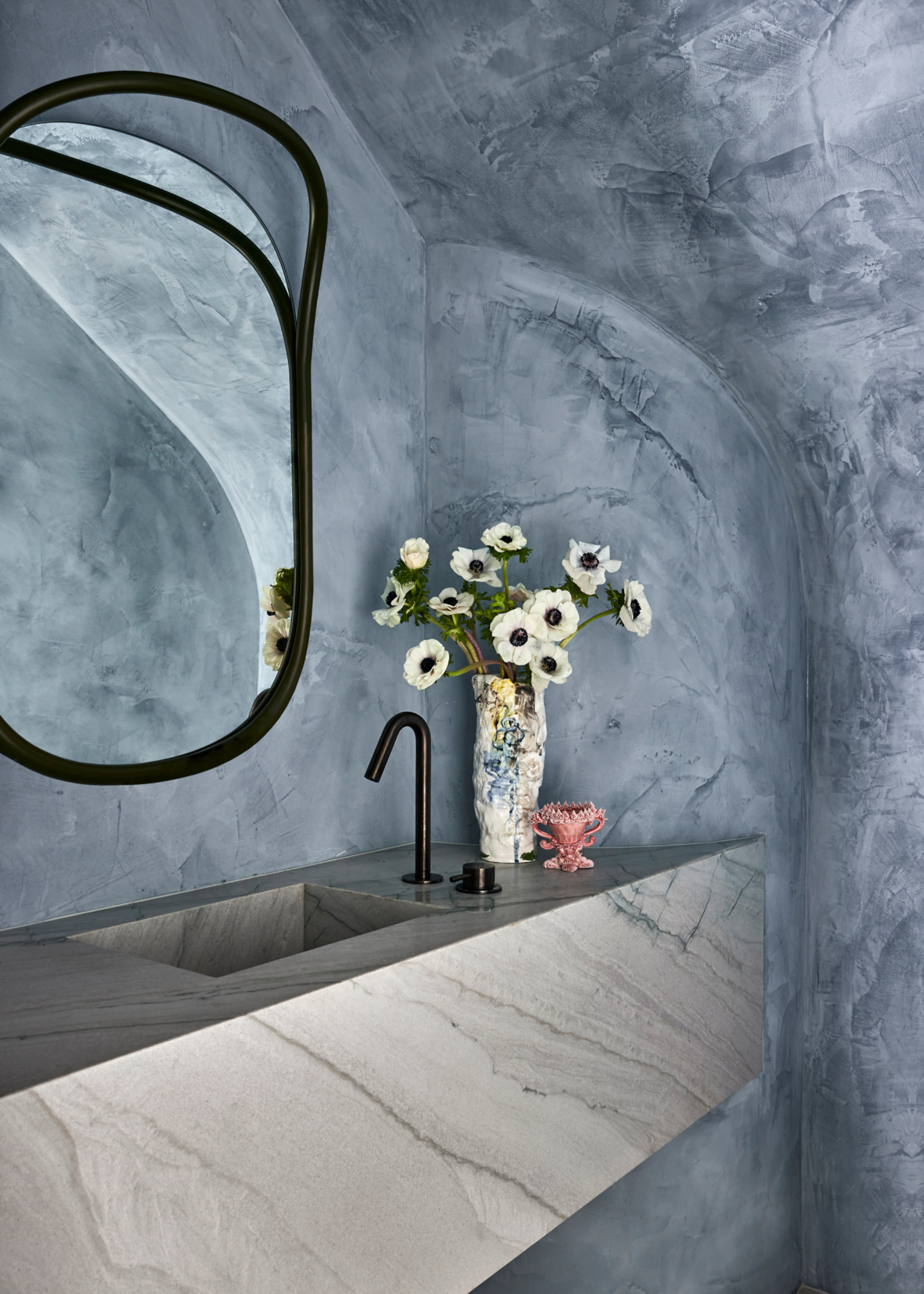
In smaller bathrooms, creating a cozy, cavernous look can help elevate the space.
The best materials marry beauty with functionality, and quartzite does exactly that. As Shona McElroy from Smac Studio explains, "It's a really hardy stone that will stand all sorts of products, chips, and the test of time."
Quartzite, much like soapstone, is a metamorphic rock. It's favored for its intensely durable qualities, as well as its beautiful finish, which can often resemble marble.
"This stone works in this space from an all-encompassing color saturation perspective," Shona explains, "The Venetian plaster walls pair with it perfectly, and its white veining coming through helps the material really shine."
In this cozy, cavernous space, the quartzite surface provides an extra level of texture and depth. "This particular bathroom was under a stair so we had an underwater theme going, by softening the edges and bringing in this beautiful stone that reminded us of waves - we really accentuated that," Shona says.
With a Bachelor of Architecture from the University of Sydney, Shona’s creativity and unexpected design details have seen her nominated for an Australian Interior Design Award, a Dezeen House Interior Award and IDEA Emerging Designer of the Year.
4. Travertine
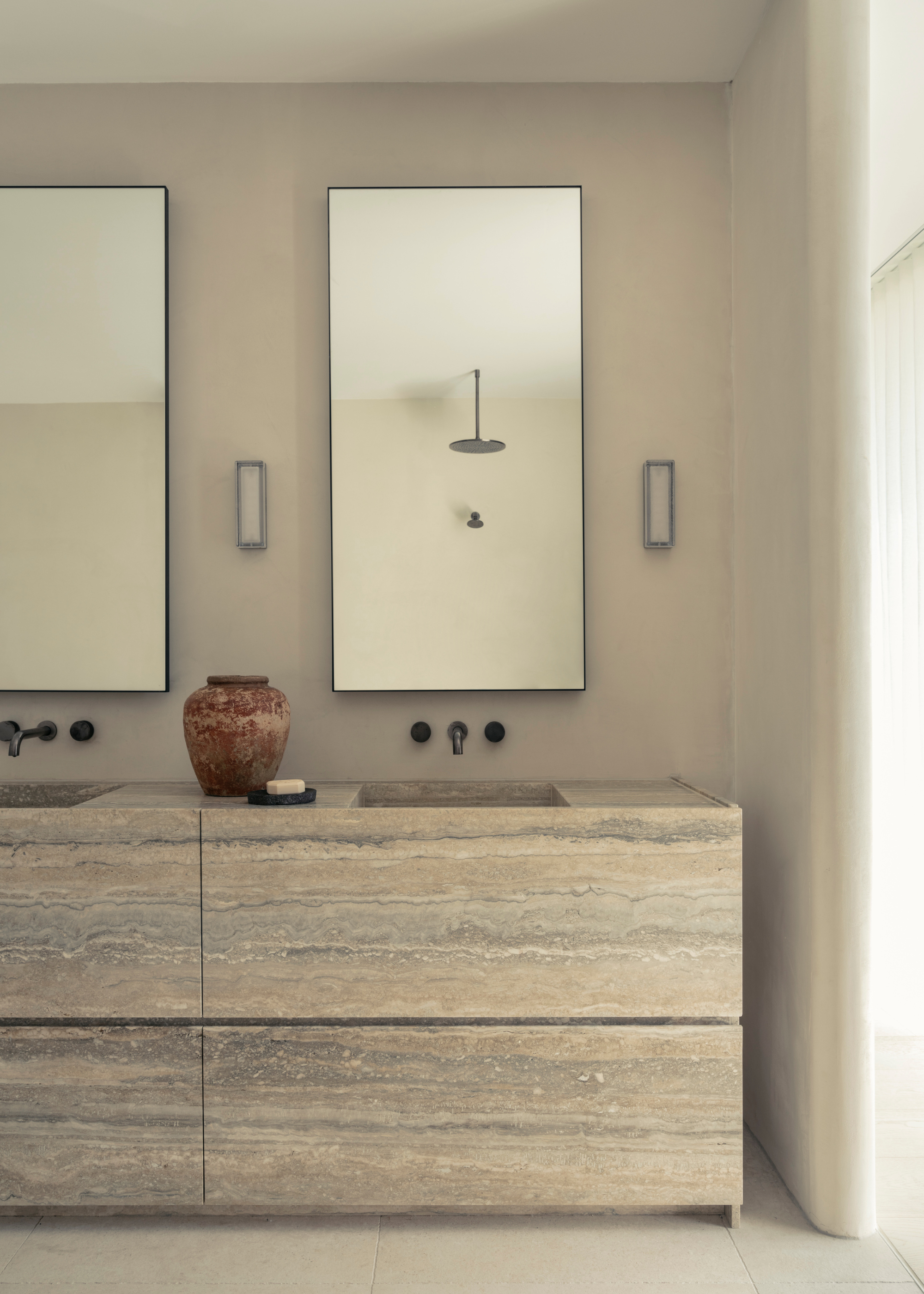
Travertine is a beautifully minimalist, neutral, yet striking material to use in interior design.
An emerging favorite among designers, travertine is loved for its sweeping lines and striking appearance, it brings a beautiful sense of movement to a space in a way that's unlike any other material.
Chloe Matters, from Matters and Made explains, "We used the ocean blue travertine as a statement piece in this bathroom as its tones and textures beautifully echo the sand, ocean, and natural surroundings visible from the space."
The sandy tones and flowing lines evoke the visual language of the seaside, making it particularly effective in coastal homes.
"The material allowed us to harmonise the inside and outside, creating a seamless connection to the landscape," she says, "We love using this stone as an accent; it brings a calm yet striking presence that grounds the room in its environment while feeling effortlessly luxurious."
5. Quartz
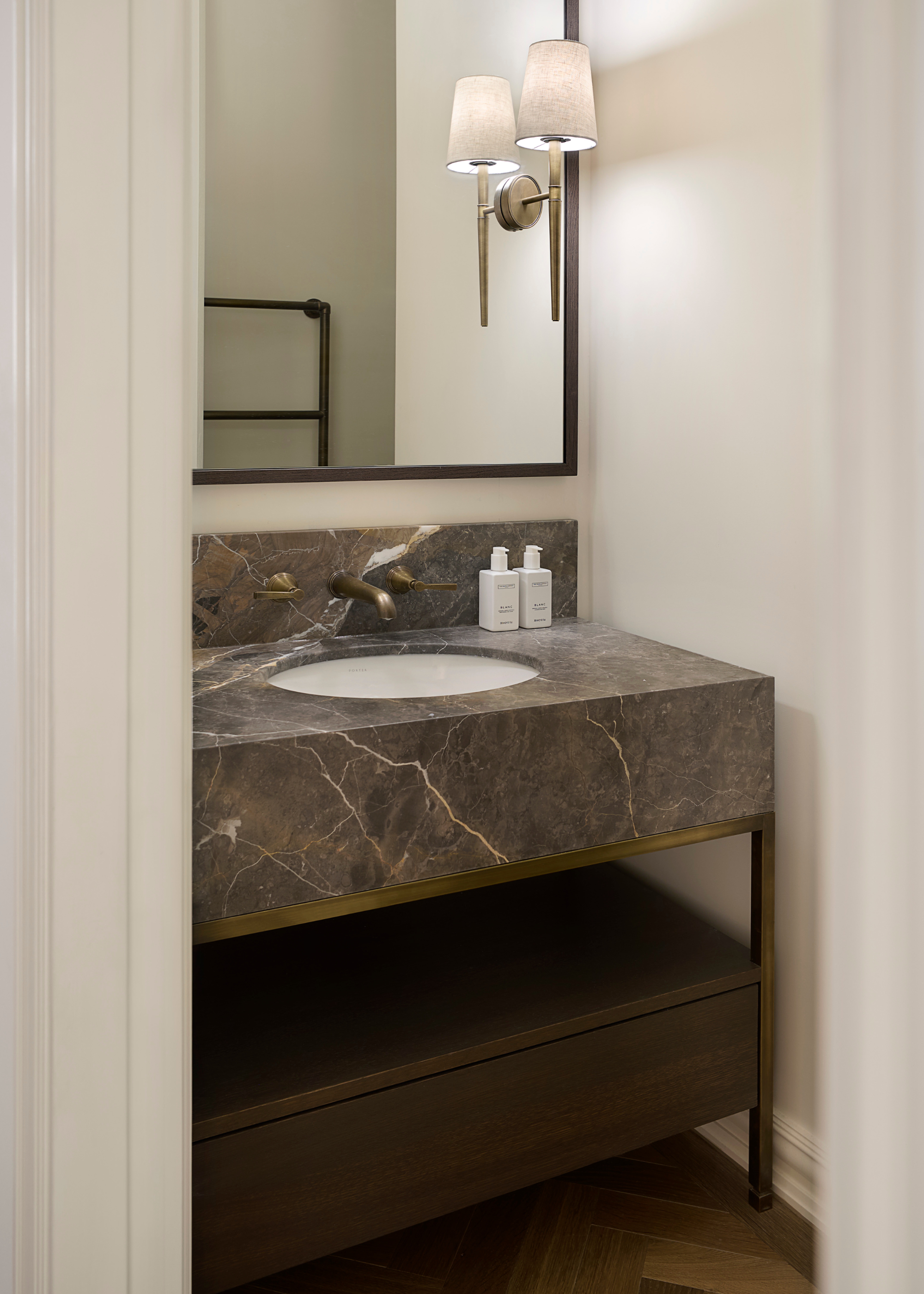
Engineered surfaces, like quartz, are known for their durability.
While the previous choices might lead you to think otherwise, there is a whole world of beautiful bathrooms that do not revolve around marble.
"While marble is the epitome of luxury, it’s porous and can be sensitive to everyday cleaning and beauty products found in the bathroom," says Sally O'Connor of Hesellic Design.
Although with proper sealing, marble bathrooms can be a perfectly sensible design choice, the material is inherently sensitive and will always be more liable to staining than other, more robust materials.
Sally continues, saying, "We therefore recommend quartz for bathroom countertops. Quartz is an engineered stone that combines natural quartz crystals with resins and pigment, creating a non-porous, durable product resistant to stains."
Quartz (not to be confused with quartzite) is an excellent choice for bathrooms that need to withstand the tolls of daily use, while still looking gorgeous.
"The low maintenance required for quartz is a major advantage for busy bathrooms. It doesn’t need sealing and can be easily cleaned with mild soap and water. Available in a wide range of colors and patterns, quartz can mimic the appearance of marble without the maintenance drawbacks," Sally explains.
6. Solid Surfaces
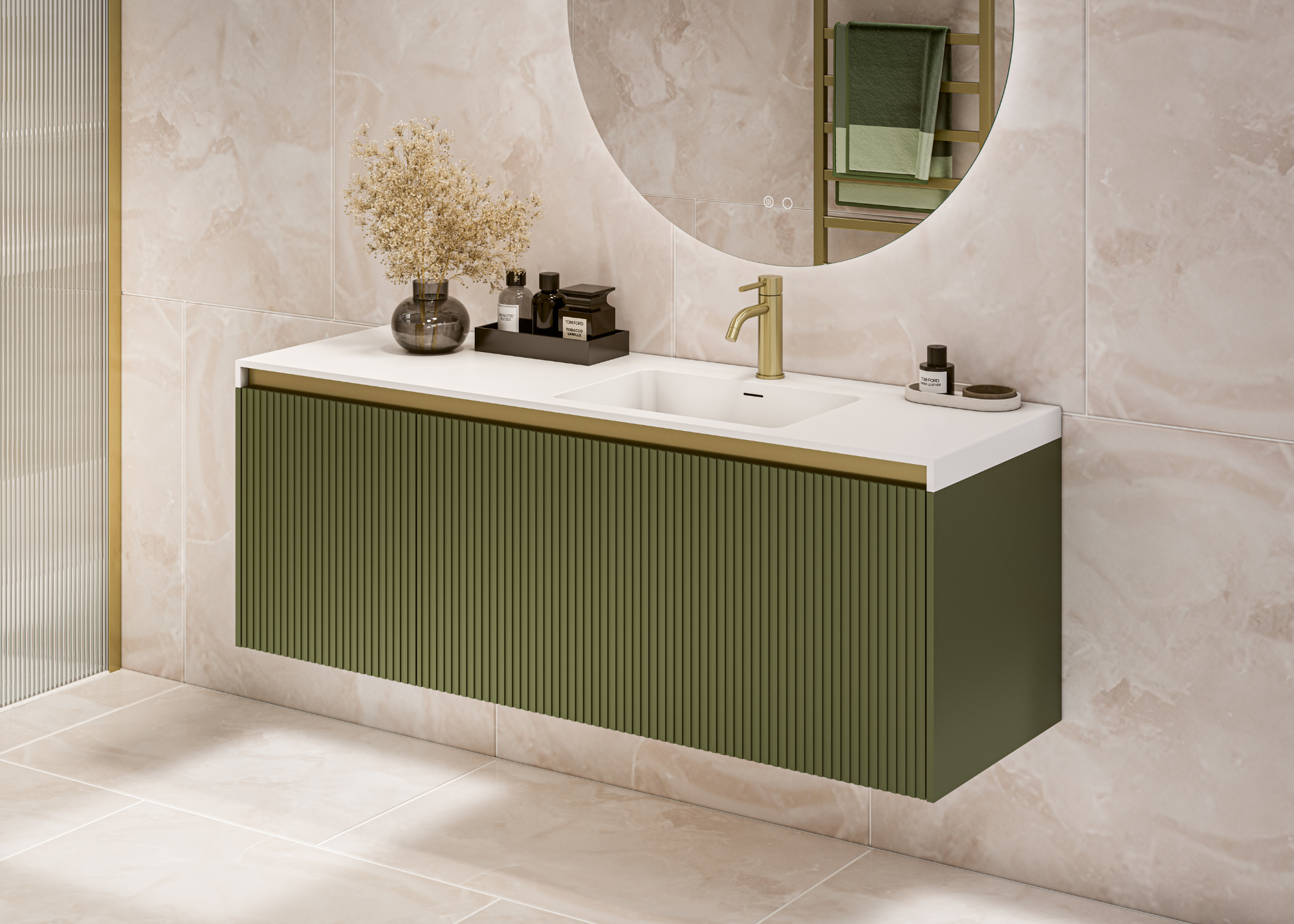
Sold surfaces provide the most durable, easy-to-maintain finish.
For small bathroom ideas where practicality and modernity come out on top, engineered, solid surface countertops can be one of the best choices you could make.
"Solid surface worktops offer a seamless, contemporary look that feels at home in both minimalist and design-led bathrooms," comments Richard Eaton, design manager at Tissino.
While this may sound like a phenomenally vague descriptor, Richard explains the material in more depth, saying, "Made from a blend of natural minerals and resins, the material is non-porous, durable, and easy to maintain, ideal for the humidity and daily wear of a bathroom environment. Its smooth, matte texture also provides a refined, architectural finish that complements a wide range of furniture styles and colors."
The simplicity of the finish makes it ideal for modern, seamless, and most importantly, low-maintenance bathrooms.
"One of the key advantages of a solid surface is that the basin can be integrated directly into the countertop. This creates a clean, uninterrupted line with no joins, giving the appearance of a single sculpted piece," Richard explains, "Not only does this elevate the aesthetic, but it also makes cleaning effortless and enhances the sense of calm and cohesion across the vanity area."
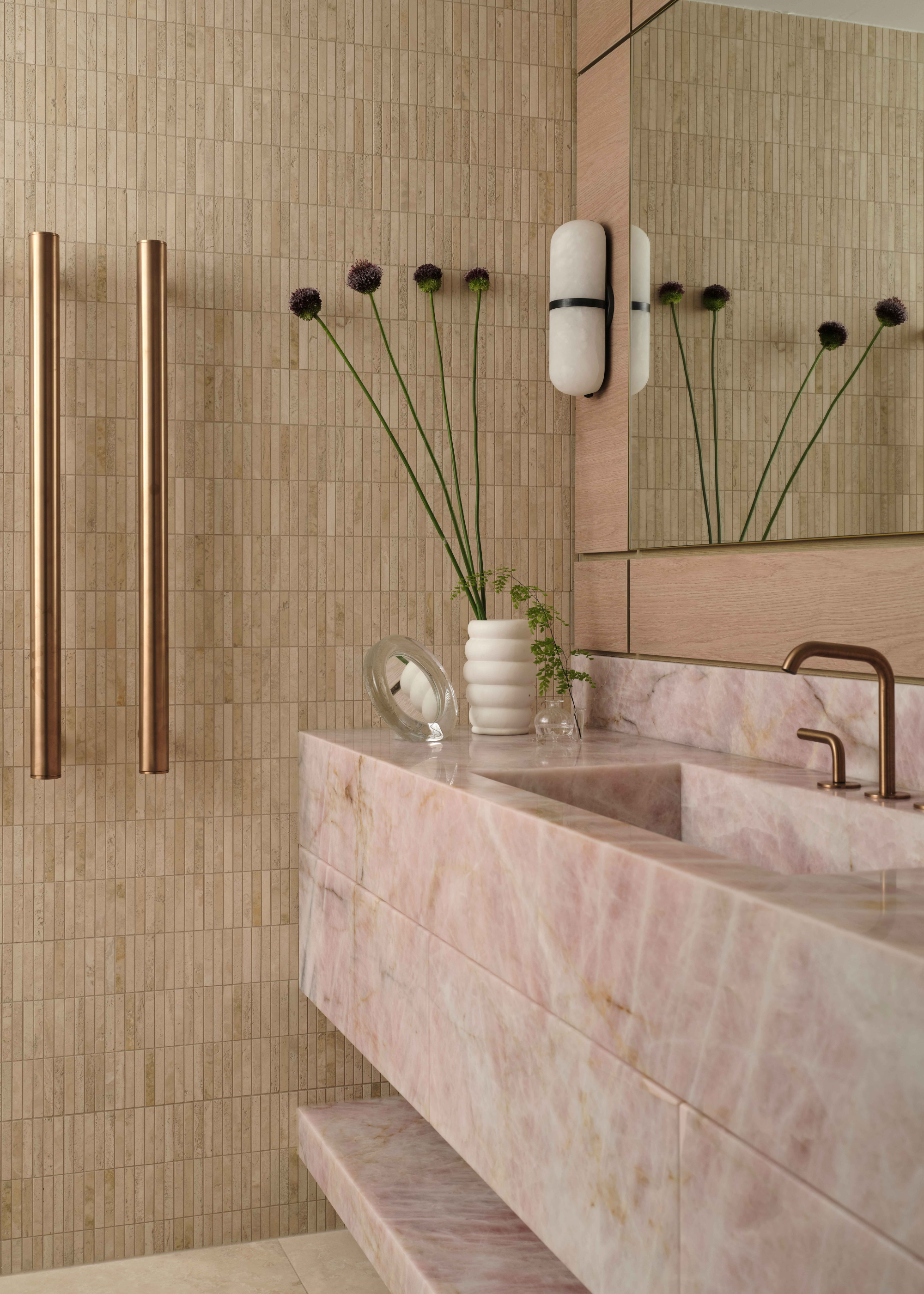
"With this stone in particular we loved the almost onyx like translucency," says Shona.
There's something especially indulgent about the look of a pink bathroom, and there's no better way to achieve the look than with the inclusion of some cotton-candy pink quartz.
"This bathroom functioned as both the main bathroom and the guest bathroom for the home — so it needed to do both," Shona says about the design.
In this relatively neutral room, the rosy pink quartz takes on the role of main character with elegance and ease.
"You can see our relating materials are very warm and soft travertine that's not too crazy for everyday, however, the blush quartz countertop provides a pop of colour, and interest," says Shona.
7. Tile
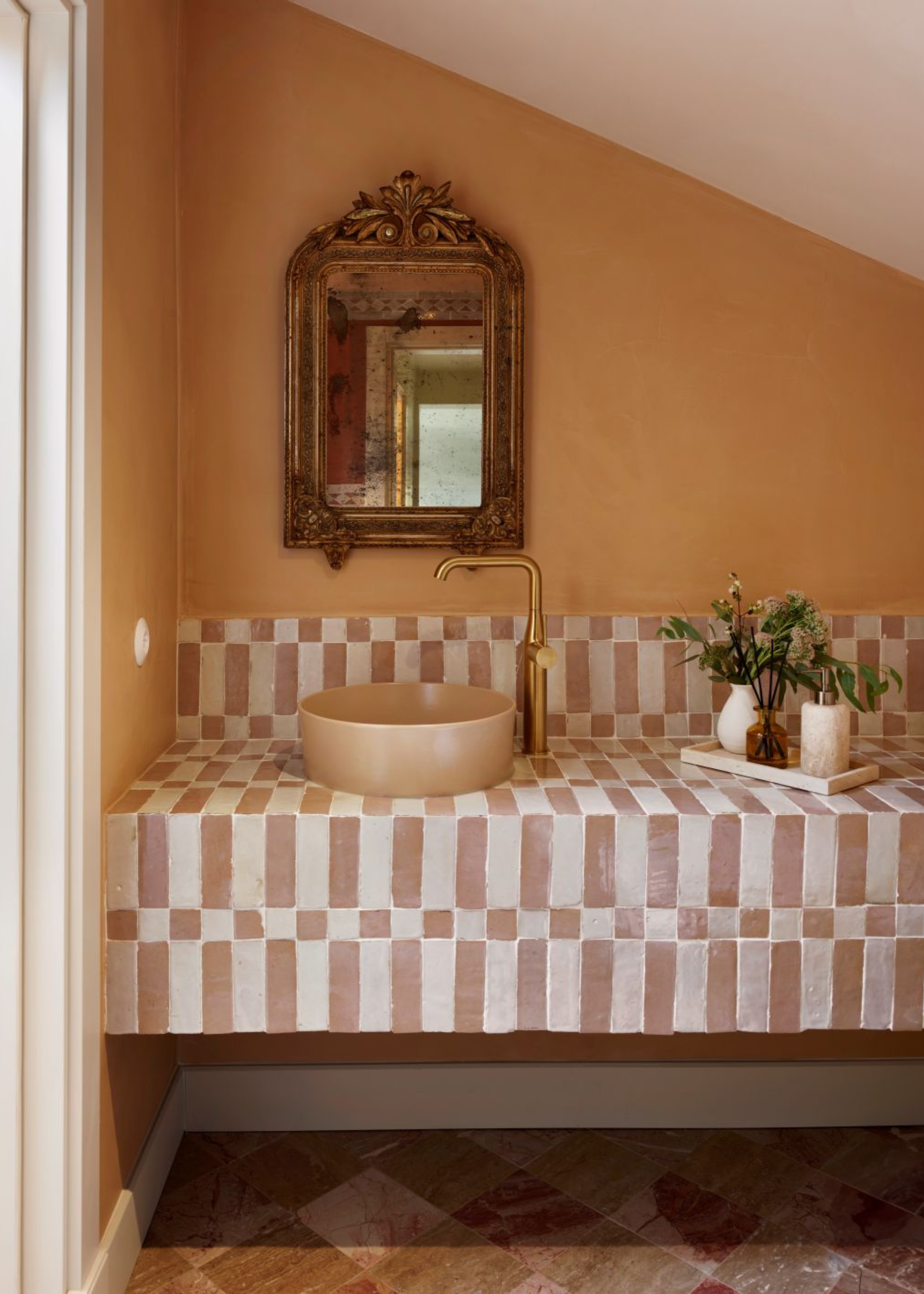
"From a practical point of view, I tend to recommend these smaller-format tiles or mosaics, they’re easier to work with and have minimal grout lines to disrupt the aesthetic flow," says Camilla.
"Designers are rediscovering the beauty of tiled countertops as a way to add depth and character to bathrooms," notes Camilla Masi, from Otto Tiles.
A natural progression of the tile drenching trend we've seen take over bathroom design in recent years, tiled countertops bring even more texture and movement to your space.
"Tiles bring a tactile quality that stone and solid surfaces can’t replicate, and because they’re available in so many shades, shapes, scales, and finishes, it’s easy to create something truly personal, from a clean architectural look to something more playful and decorative," Camilla says.
As she mentions, there is so much space for variation with this look, allowing you to develop something that feels unique.
"Personally, I love a simple glazed Zellige tile as they have beautiful tonal nuances that give real depth and character to a bathroom surface," she says, "You can keep it subtle with a single shade or introduce a mosaic layout for a more decorative statement without overwhelming the space."
How to Style Your Bathroom Surfaces
Now that you've got your countertops down, it's time to turn your mind to... the rest of your bathroom. Why not work from the bottom up? These are some of our favorite bathroom flooring ideas for you to look through.

Maya Glantz is a Design Writer at Livingetc, covering all things bathrooms and kitchens. Her background in Art History informed her love of the aesthetic world, and she believes in the importance of finding beauty in the everyday. She recently graduated from City University with a Masters Degree in Magazine Journalism, during which she gained experience writing for various publications, including the Evening Standard. A lover of mid-century style, she can be found endlessly adding to her dream home Pinterest board.



